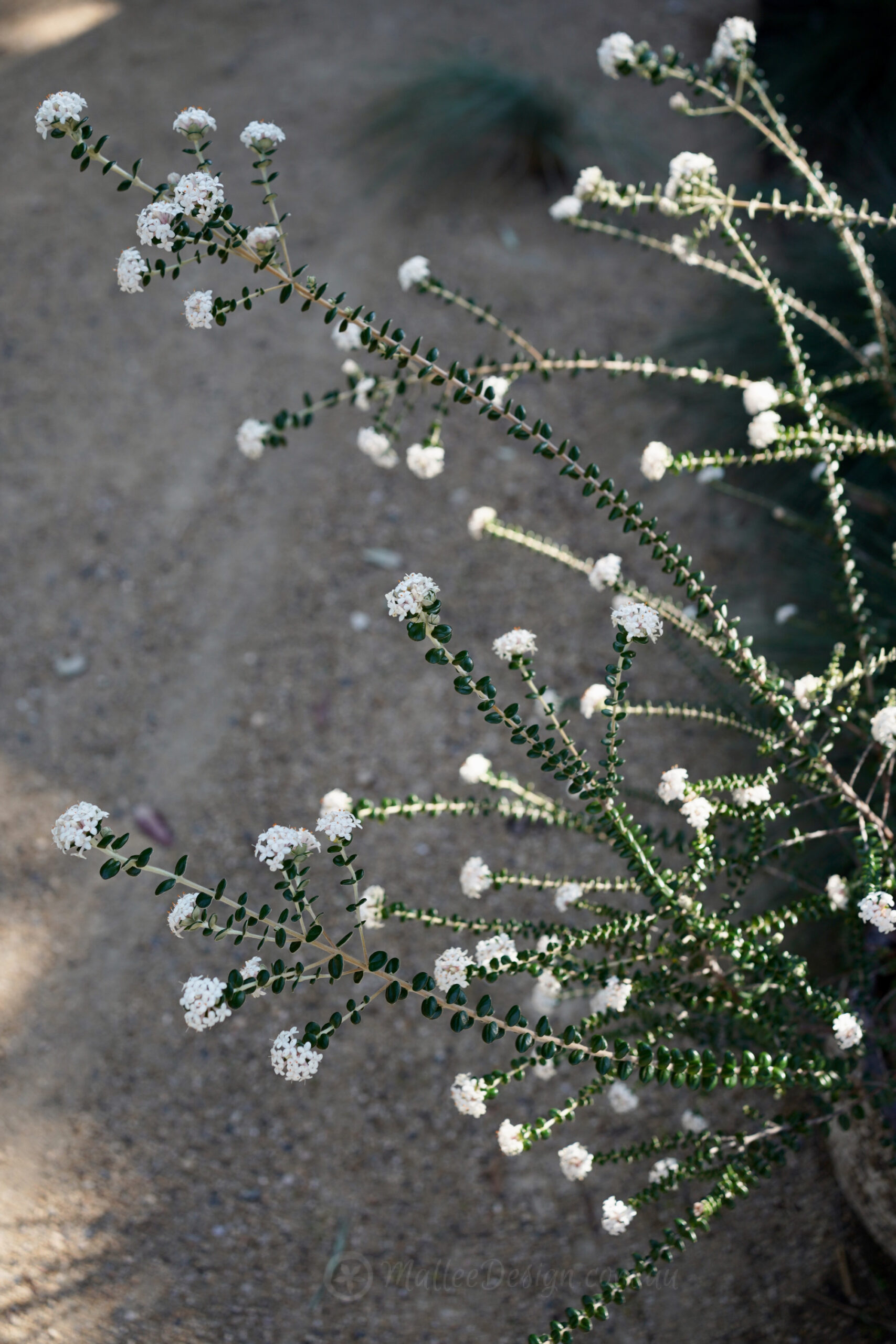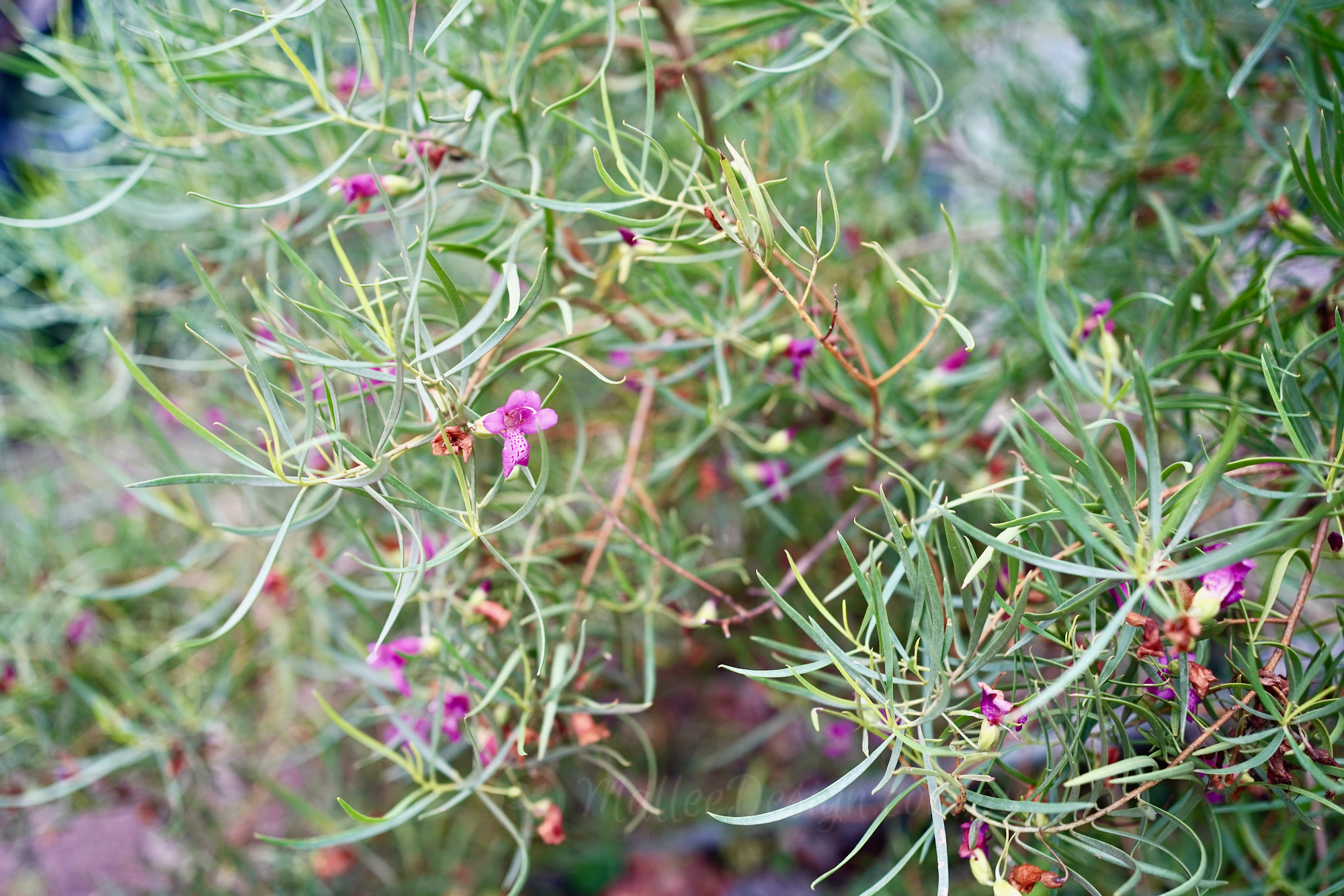-

Pimelea nivea: A shrub of contrasts
Pimeleas are wonderful species, they grow quickly and flower often, for long periods of time. However this particular Pimelea is my favourite of all time, forever. This is Pimelea nivea and hails from my home state of Tasmania, I have seen it growing on rocky headlands and gravely Eucalyptus under storey and it is a very…
-

Anigozanthos ‘Landscape Lime’the underdog
In the next couple of months Kangaroo Paws all over Australia will be stretching their stems for the sun, flaunting their flower ladened spikes for the birds and the bees. But not just for the wildlife, Anigozanthos are undoubtedly one of our nations most iconic genus and with recent breeding in the taller range, they…
-

Wispy and Light: Grevillea linearifolia
As the name suggests this is a Grevillea with linear leaves, long skinny leaves which give it a gentle wispy habit. Combined with the pink new growth on the end of each stem, this is a showy species whether in flower or not. Grevillea linearifolia can be found naturally in the Greater Sydney Basin bushland…
-

Calothamnus quadrifidus grey: texture and toughness
I thought I had already dedicated a blog post to this steadfast native shrub but have just realised it has featured a few times but hasn’t been praised individually yet. Very strange as this is a staple in many of my screening plantings or used as a feature shrub, especially as it will quite happily…
-

Calothamnus quadrifidus yellow : The younger sibling
This is the lesser known One sided bottlebrush, the sibling in the shadows if you will, of the very showy Calothamnus quadrifidus ‘Grey’. I love both of course, and I think this green leaf form of Calothamnus deserves to be utilised a lot more in the garden. Calothamnus quadrifidus ‘Yellow’ is a very hardy medium…
-

The multifaceted Eremophila oppositifolia
Eremophila oppositifolia is very deceiving , it appears delicate and a little fussy but in actual fact it is one of the hardiest native shrubs around. Most Eremophila or Emu bush grow naturally in Western and Southern Australia and although they come from area with a Mediterranean climate many of them are quite adaptable in…
-

Outstanding: Grevillea arenaria
This is an outstanding plant for attracting birds, providing nesting habitat, shelter and nectar for honeyeaters and insectivorous birds. George Adams ‘Birdscaping Australian Gardens’ Thanks George I couldn’t have said it any better! I love my copy of the above book and use it all the time, I also love Grevillea arenaria or the Nepean…
-

Shade-loving Ornamental Grass: Libertia paniculata
I use this handy little native grass alot in my designs. It looks wonderful mass planted in a shady position and when it begins to flower in Winter it brings a welcome highlight to a dark corner. The flowers last several months and can carry on into Spring. It does prefer part shade and can…
-

some very impressive Epacris
Epacris are simply delightful at this time of year, their long prickly stems get covered in dense clusters of small bell flowers, brightening any dull Winter day. There are many different Epacris species and they can be found growing as an under-storey in heathland in NSW, Victoria, Tasmania and South Australia, often on damp sandstone…
-

The little known Banksia ericifolia ‘Little Eric’
Banksias all over Australia are hitting their flowering stride this season, from Autumn until Spring is when most Banksia species will be covered in nectar rich flower spikes. Most people are familiar with the Dwarf Banksia spinulosa cultivars like ‘Birthday Candles’ and ‘Coastal Cushions’. This post is a little shout out to a lesser know…
-

The Invaluable Grevillea ‘Dorothy gordon’
I struggle a little with some of the Large flowering Grevilleas, they tend to attract the more aggressive nectar feeding birds like Rainbow Lorikeets and Noisy Miners. These birds then tend to dominate the garden scaring away the smaller more timid birds. However I do make an exception for a hand full of large flowering…
-

Soft and Foamy Grevillea’Seaspray’
Generally I am drawn to plants which are tactile and gentle, whether that be a weeping habit, furry leaf or light breezy foliage. By nature many of our Australian native plants have a grey or silver leaf, which helps them withstand extreme heat or salty sea air, this type of leaf I love as it…
-

the always blooming Grevillea × semperflorens
This is a little known Grevillea Hybrid which has been around for a long time, I have never really understood why this Grevillea isn’t more widely used. It is highly ornamental and spends much of the year in flower. In fact semperflorens actually means always blooming. It is a hrybrid between G. thelemanniana and a yellow-flowered…
-

for lovers of purple:Melaleuca nesophila
I must admit purple is not one of my favourite colours and when clients specify purple flowers I often come up a blank and can only think of Hardenbergia, which is completely ridiculous as there are Brachyscome, Scaevola, Patersonia and soooo many Melaleucas have purple flowers, silly me. This one is one of my favourites…
-

Another striking Australian Ornamental Grass: Austrostipa verticillata
I saw this species of Austrostipa growing in Canberra a few weeks back, and photographed it thinking it was Austrostipa ramosissima. However, on closer inspection I realised it was a native grass which I hadn’t come across before, how exciting! a newbie to add to my native ornamental grass planting palette. After much research I…
-

What a Summer for Corymbia ficifolia!
This Summer of 2023 – 2024 has been extremely kind to out flowering gums, enabling them to put on a prolific show Australia wide. I’m not sure what has made them so happy, it could be adequate moisture whilst they are budding up or enough heat in the sun to make the blooms pop, whatever…
-

Leptospermum ‘Cardwell’: the most floriferous of them all
Leptospermum ‘Cardwell’ becomes fully veiled in white flowers from late winter through to spring and early summer, it appears to be covered in white fluffy snow and is quite the show stopper. The weeping habit is a favourite of mine and it will happily grow in tropical, subtropical, and in cooler temperate climates. An elegant…
-

Privacy with punch: Leptospermum lanigerum ‘Seclusion’
Please meet Leptospermum ‘Seclusion’ which I am finding to be an outstanding native screening plant, originally I admit to buying it for its intriguing cultivar name ‘Seclusion’, who doesn’t want that in their garden right? It also has a classic favourite colour combination of mine which is grey leaves with pink flowers, and what a…
-

Happy Wattle Day: The Ever useful Acacia fimbriata
The 1st of September is not only the first day of Spring, but it is also National Wattle Day! So if you have any flowering in your garden, cut off a sprig for a jar or pin it to your chest with pride. It has been a very mild Winter so welcoming Spring doesn’t feel…
-

The Mediterranean flavour of Grevillea olivacea
Grevillea olivacea is considered a fast growing native shrub for dry conditions, with its dense habit it is the perfect screening plant to block out any building, street or fence. I use it for its grey foliage and small spider flowers, because spider flowering Grevilleas are my favourites! I also like to incorporate it into…
-

Light it up: Grevillea lanigera ‘Mellow Yellow’
I have mass planted Grevillea ‘Mellow Yellow in a semi shaded position in my garden and have been surprised at its tenacity and ability to cover its self in blooms for an extended period of time. The small striking spider like flowers appeared in Summer and are showing no sign of slowing down as we…
-

Native plants in the Melbourne City Streetscape
This post is all about praising the plant selection used in the ‘Grey to Green’ project in the City of Melbourne. Much of the plant palate features native species, and on a recent tour I was so impressed with the combinations and utilisation of these species that I felt the need to share some photos…
-

Emu Bush Challenge No. 10: Eremophila ‘Meringur Crimson’
And so it continues … documenting my Eremophila discoveries, I will get to 12 one day! As we approach the end of another La Niña Summer, where heavy downpours are common and the humidity is high, it is a great chance to reflect on hardy, flexible native plants. Amongst the surprises are many species of Eremophilas…
Category: Frost tolerant


